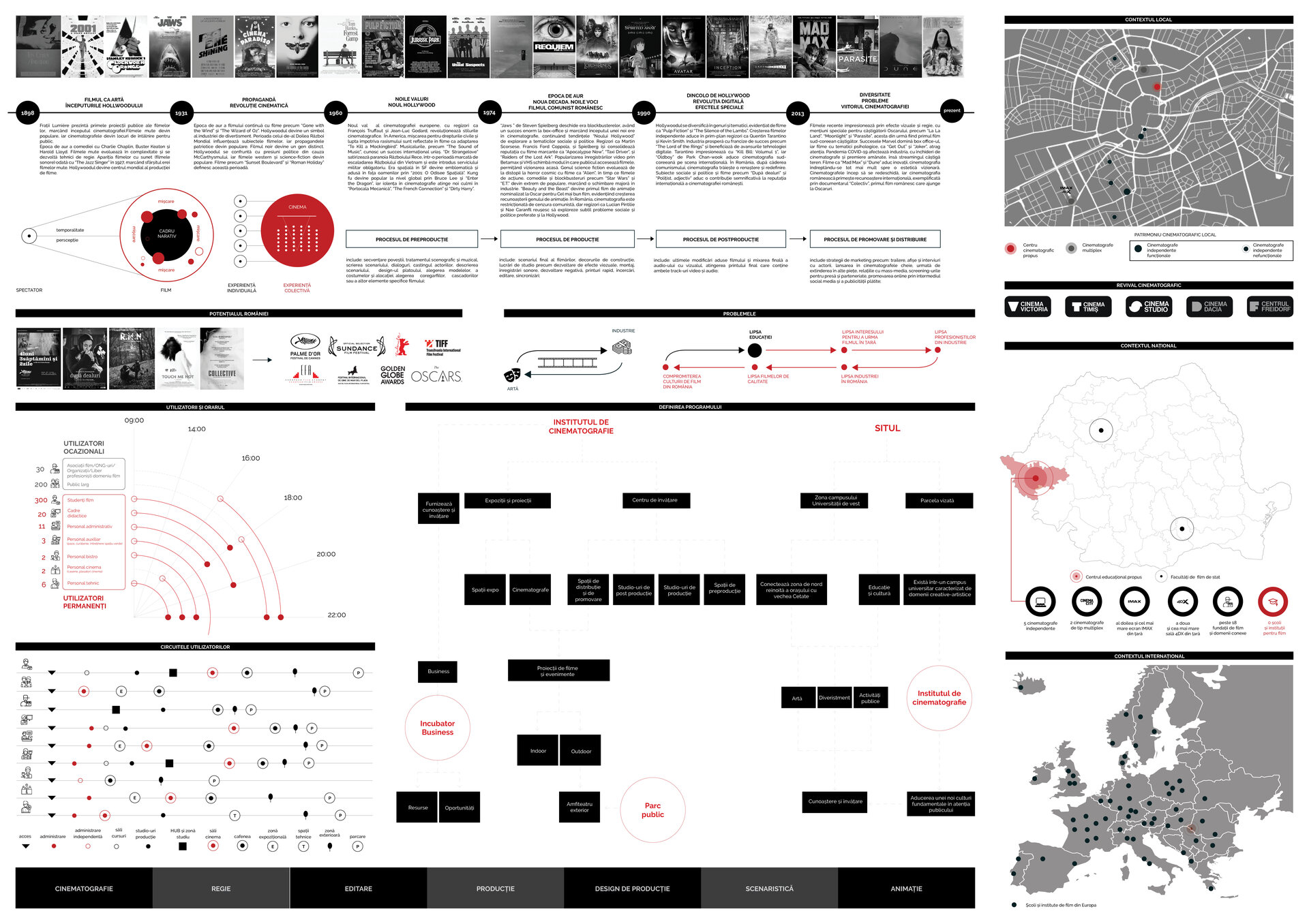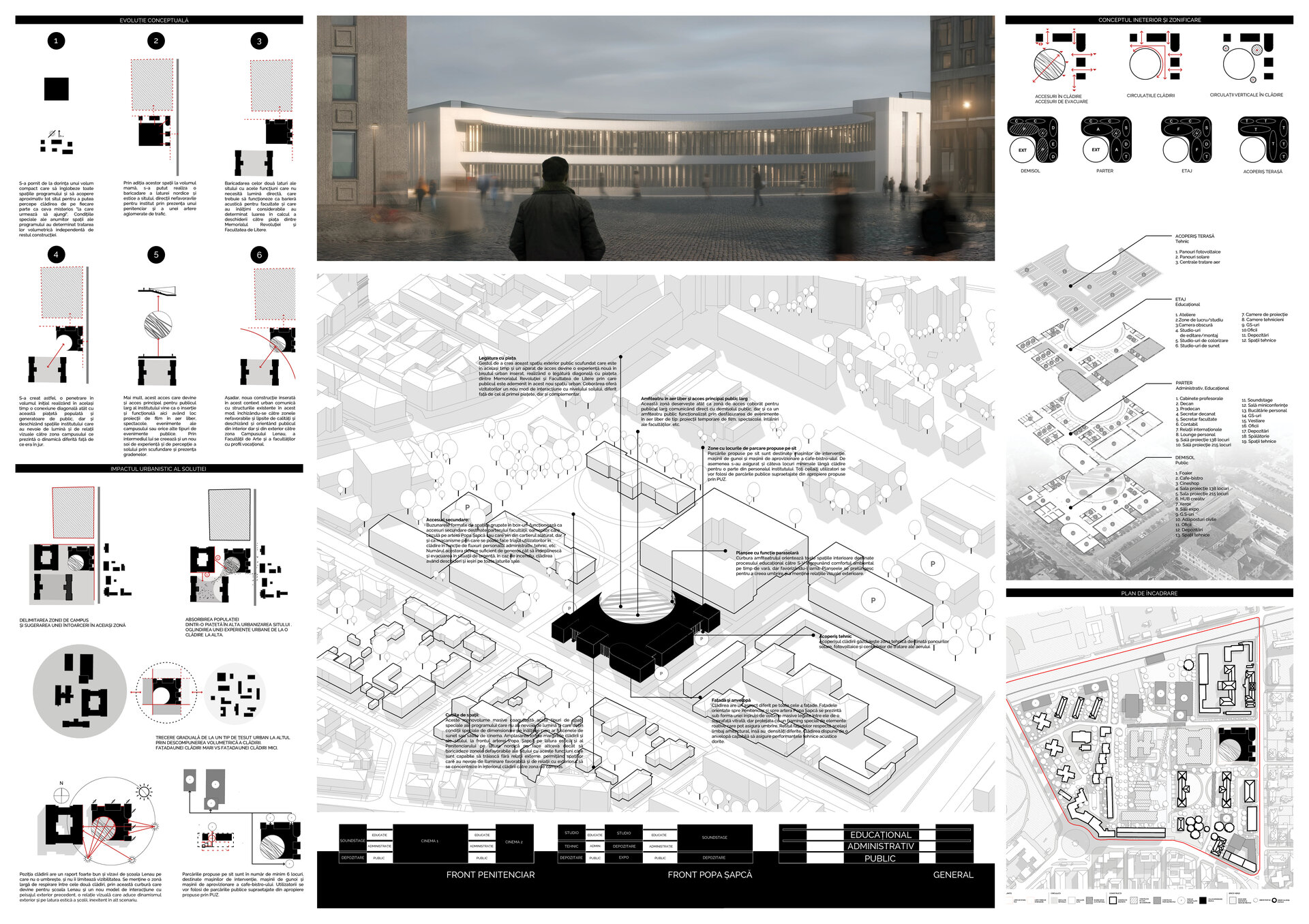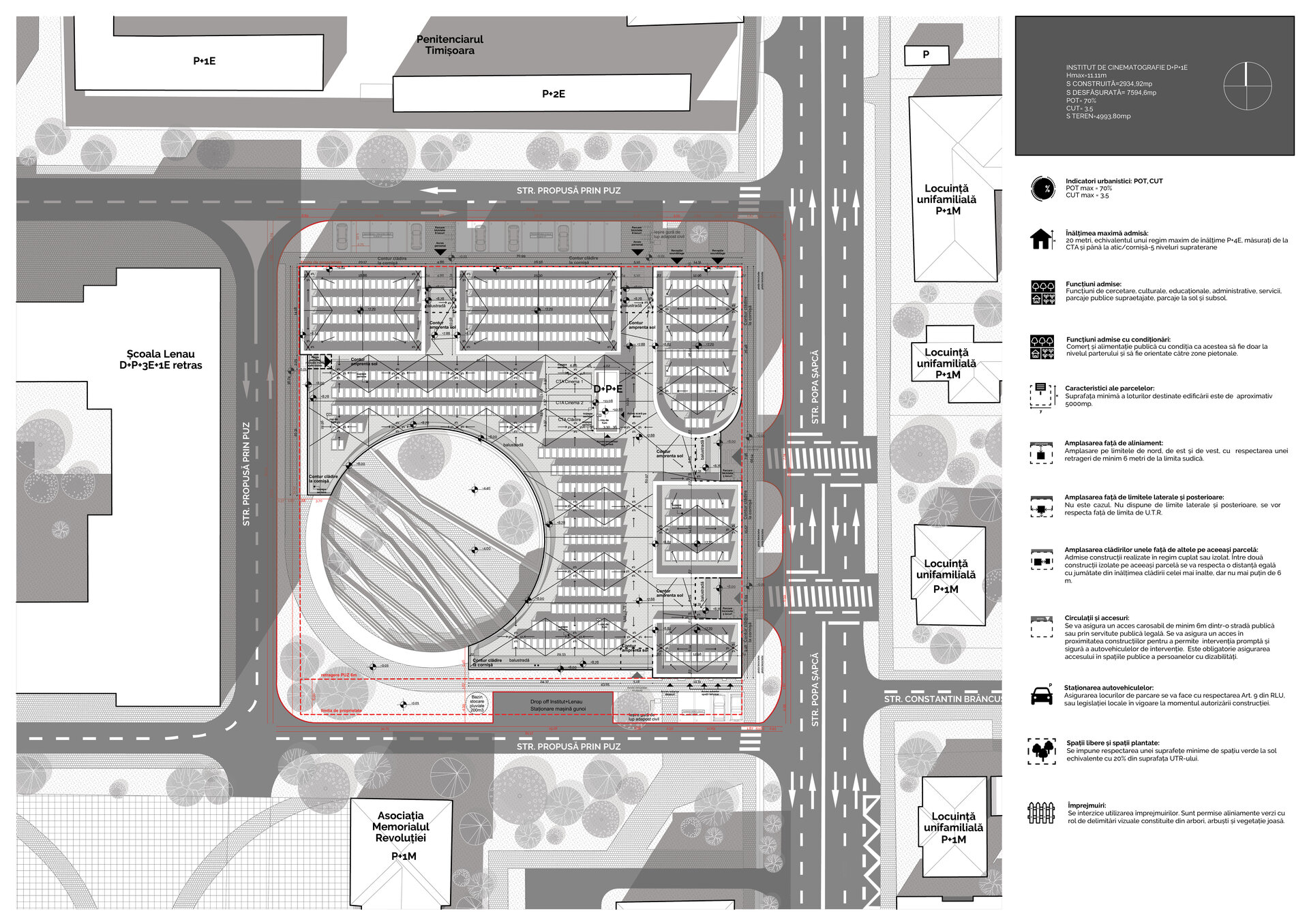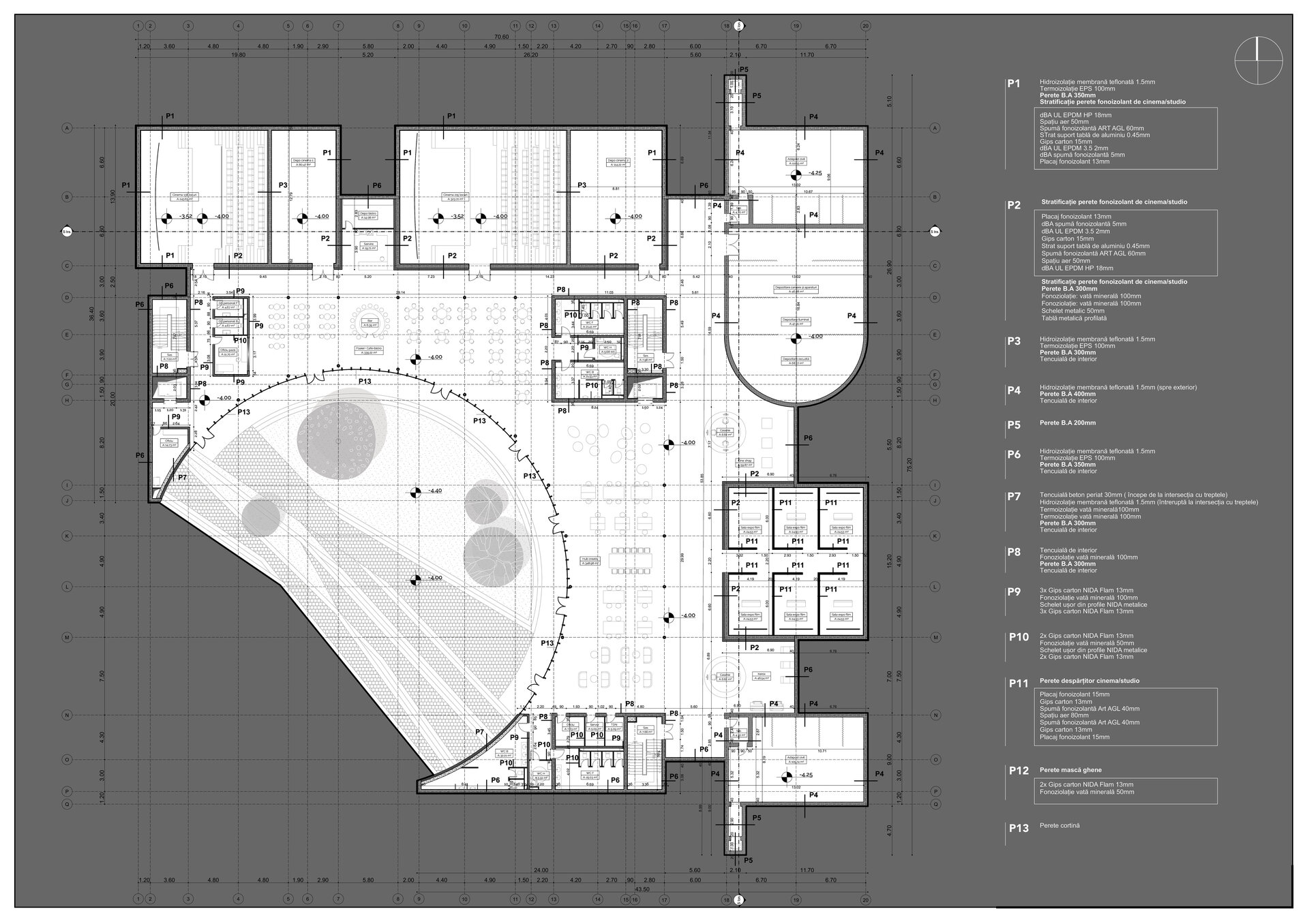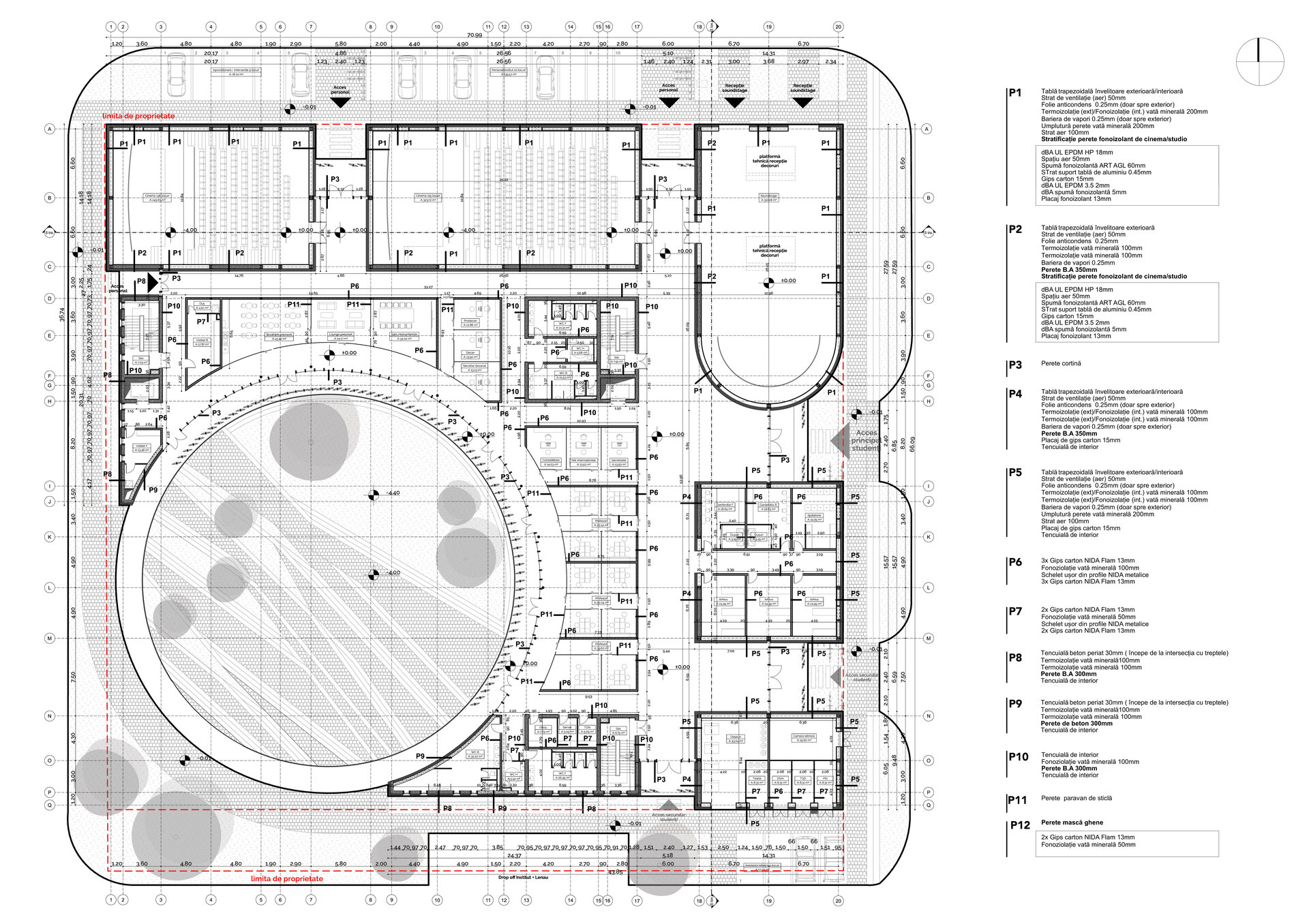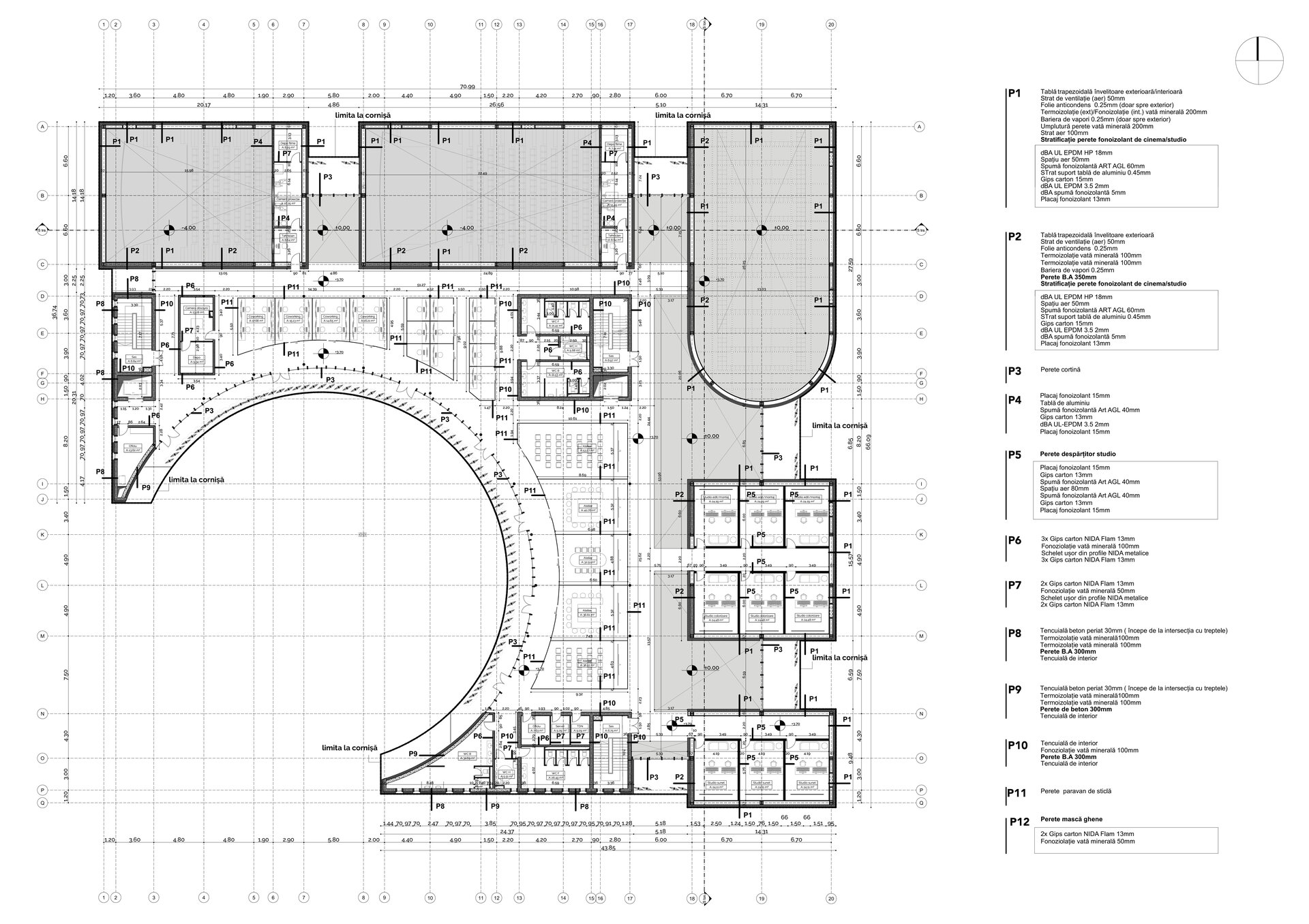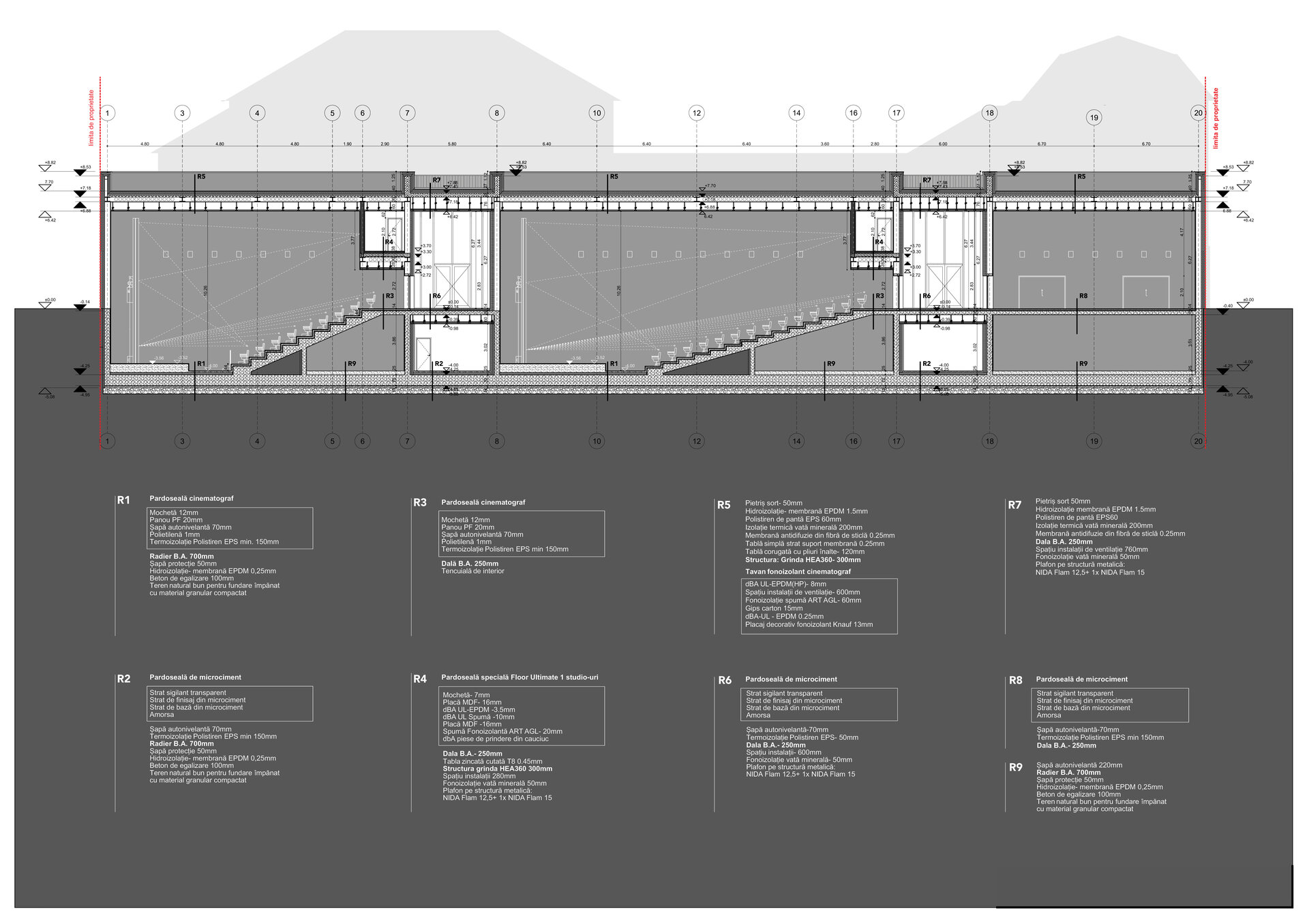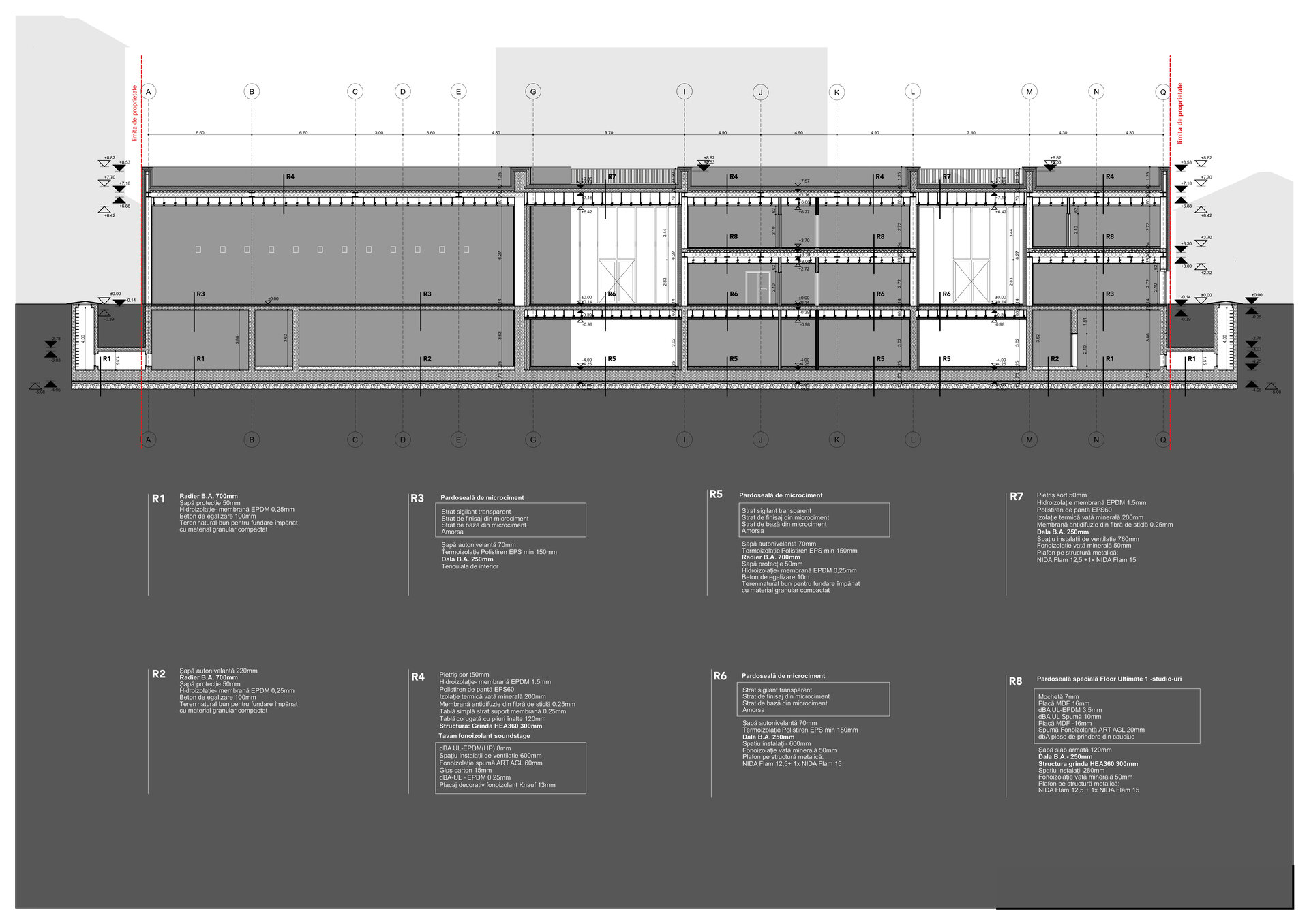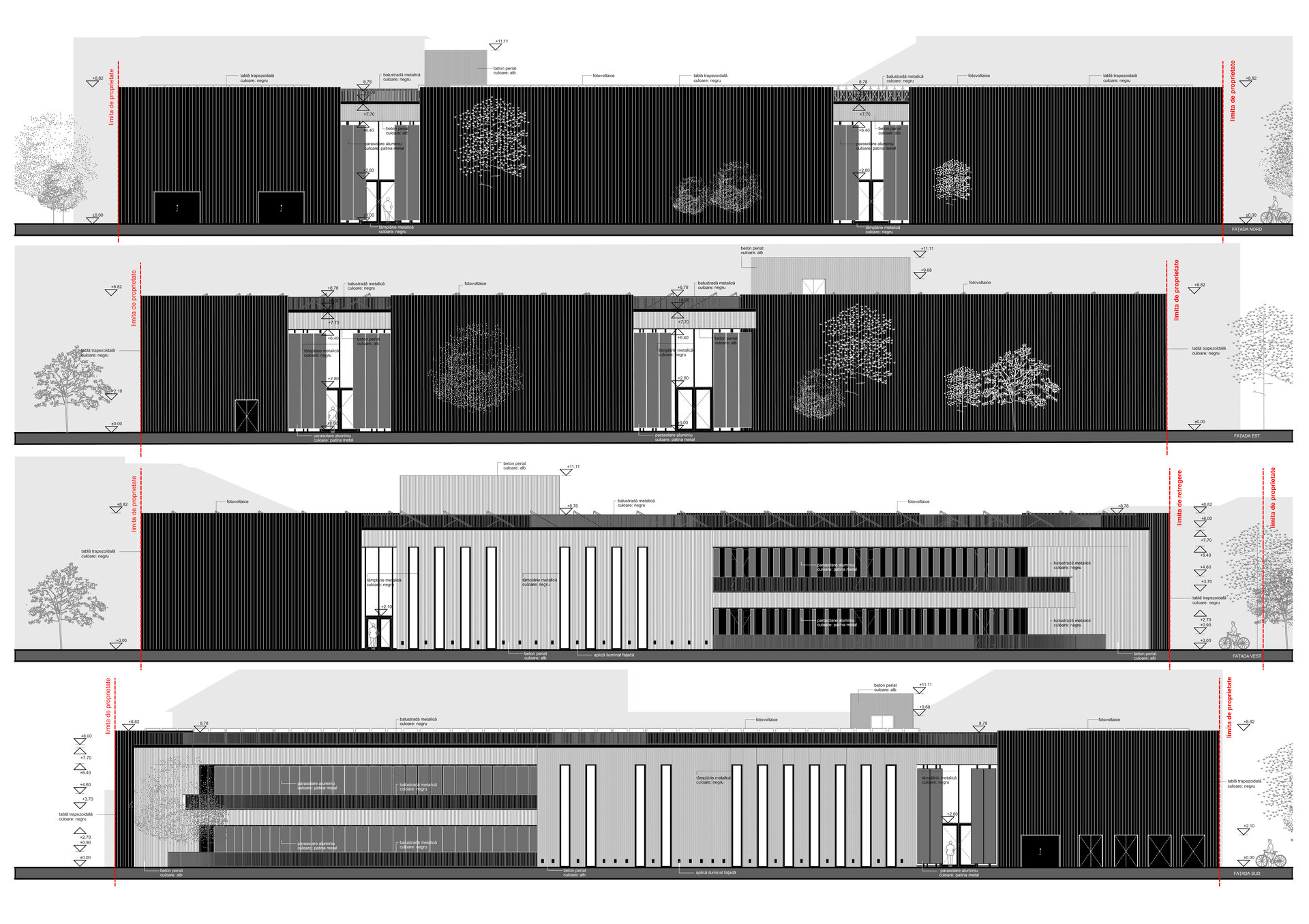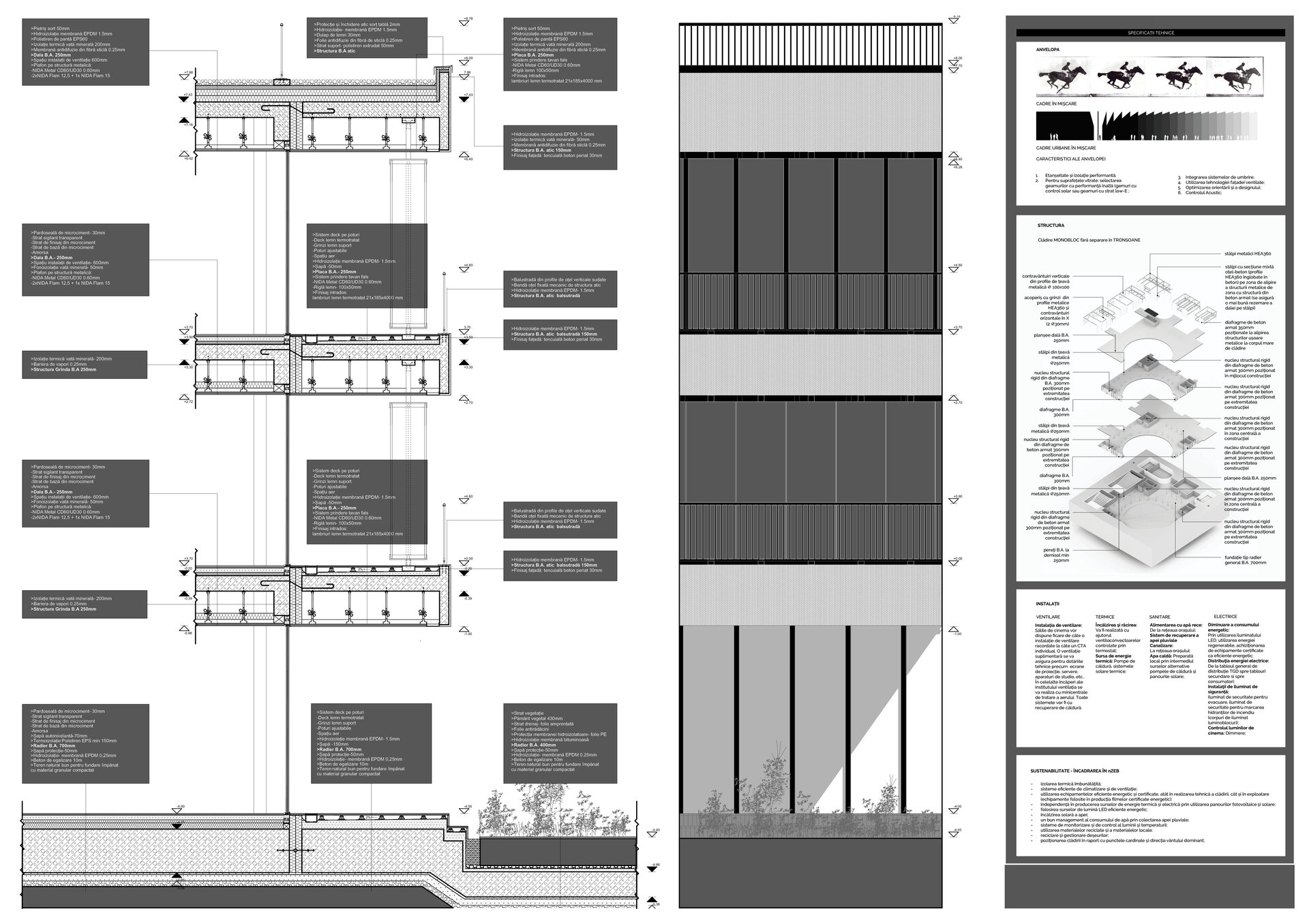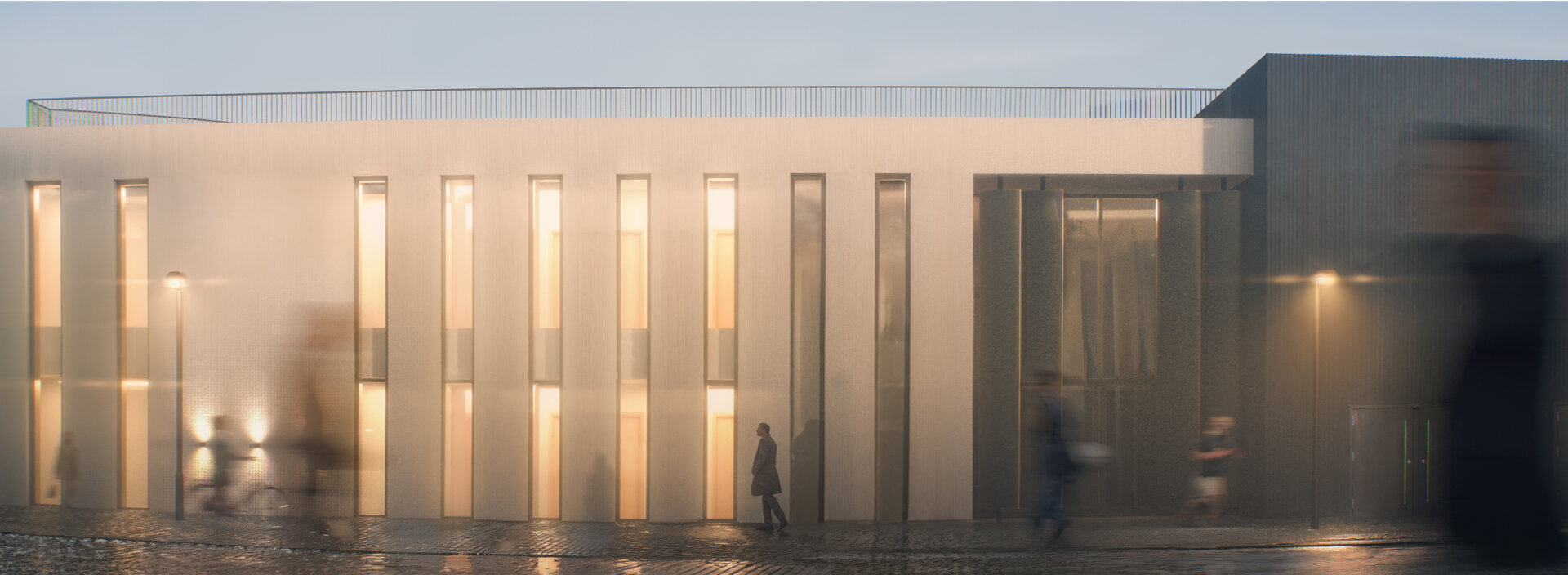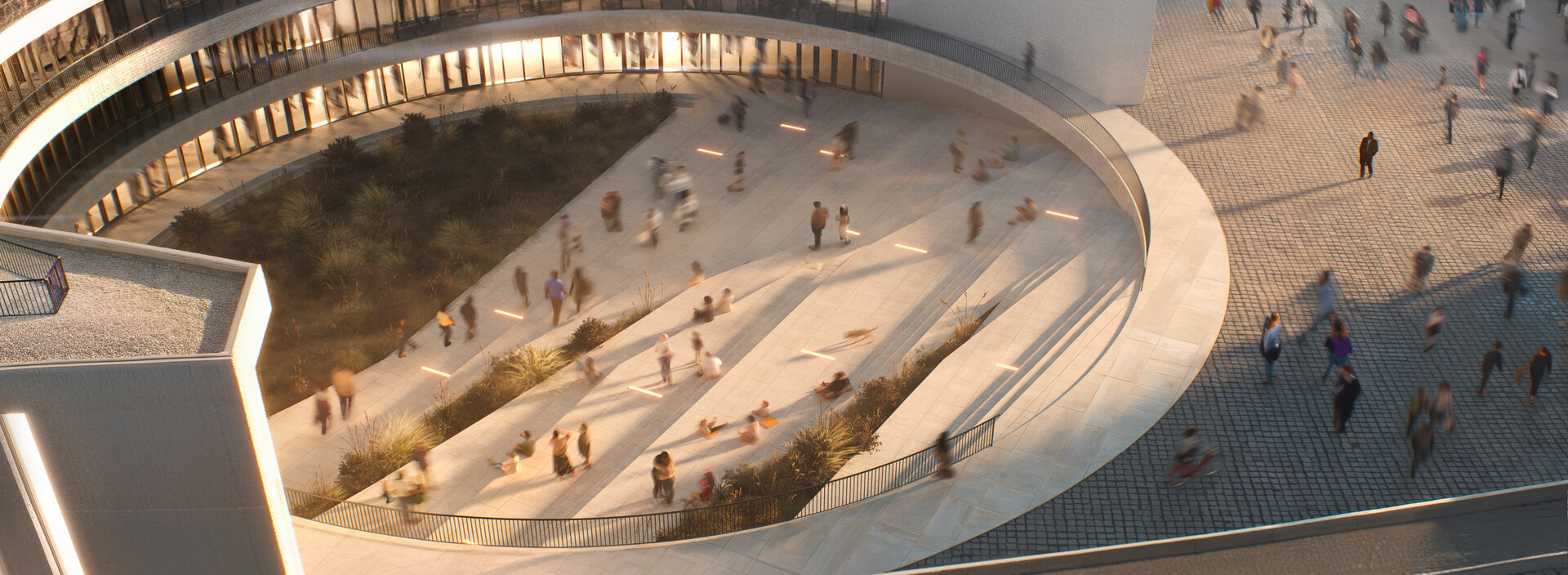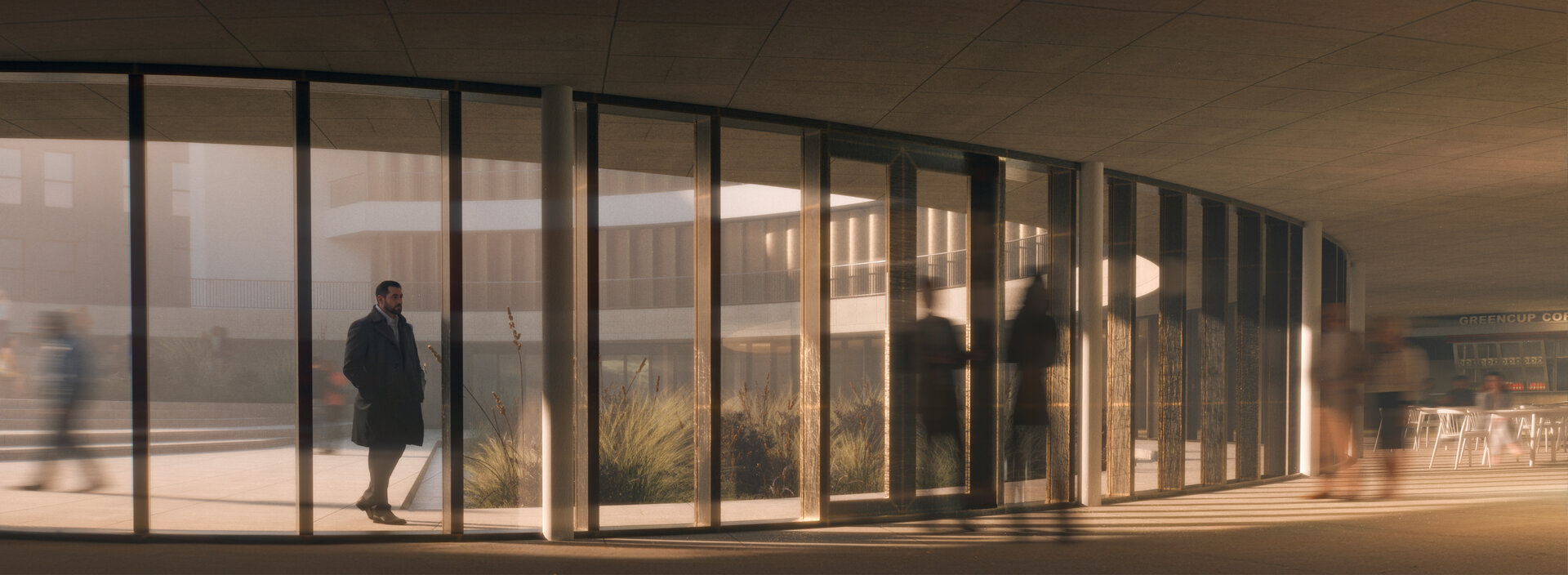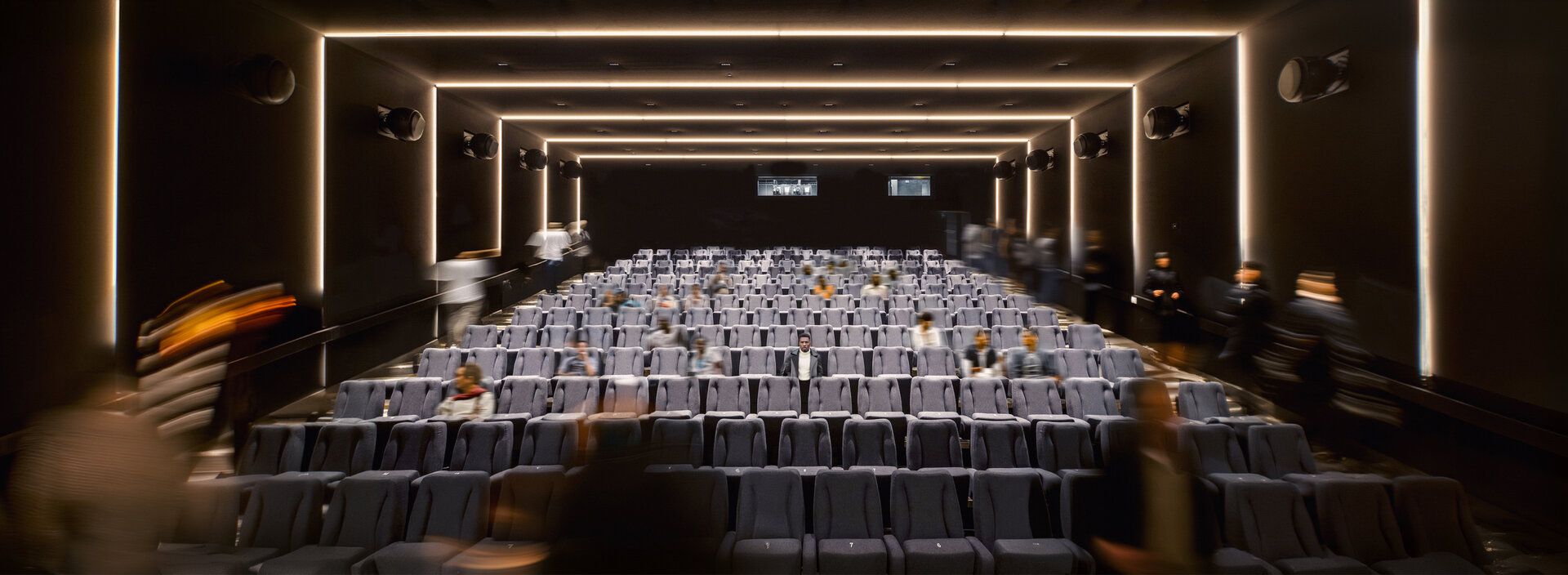
ICA - Institute of Cinematographic Arts (in Timisoara)
Authors’ Comment
Films and architecture share a symbiotic relationship that goes beyond mere coincidence. Both media reflect the culture and society in which they are created and deal with light, space, time and people, using the spatial narrative to address the human predicament. Architecture can influence the way stories unfold in movies, just as movies can inspire and generate ideas for the real world. Architecture is for the movies and movies are for architecture, both are settings in which life is interwoven in different forms. Architecture that has the capacity to become film includes spaces that have the capacity to become scenes, materials that become characters, and light and shadow that become directors of emotion.
The construction of this film institute in a city that does not currently have such an institution, Timisoara, aims to significantly improve its integration into the national and international film circuit and bring substantial benefits for young people in the process of emerging, for present and future film producers, for film enthusiasts and for the community in general. The Film Institute would cultivate local talent by providing education, training and resources for aspiring filmmakers, thus increasing the pool of skilled professionals we need to have a real industry in our cultural space.
The project is proposed for insertion in a dynamic context, with an impressive cultural and educational heritage in Timisoara, the main pole of multiculturalism and cosmopolitan atmosphere. Here there has been a growing interest in the film industry. With a combination of talented filmmakers, a burgeoning film network, film festivals and emerging production companies, Timisoara has increasingly become a focal point for film creativity and collaboration. In recent years, Timisoara has made remarkable progress in reviving independent cinemas and building a community of cinephiles in the city, in line with European objectives. Five cinemas in Timișoara have been proposed for modernization and some of them have already been renovated, while others are being refurbished. These initiatives are a priority for the local administration in its efforts to revitalize a cultural circuit that in the past was of particular importance to the city, facilitating cultural connections between different neighbourhoods and providing a means of entertainment for the united community.
This project, through the architectural language, the functional configuration of the spaces, the different hierarchies, the interaction with the outside, the play of light and dark, is meant to reflect the creativity and dynamism of the film industry, while providing a functional and efficient environment for teaching and learning through the educational function it fulfills. Being more than a film school, the building embraces in particular those elements of architectural language that can bring people closer to the cinematic atmosphere described by emerging notions such as dynamism, time, transposition, fusion or emergence, in a neutral and liberal way for all users, from the simplicity of the route through the building and spaces, to the smallest finishes and environmental details. The spaces of this institute constitute a category of special spaces,which require special needs of operation and use, special gauges both in plan and section, marked by large openings and considerable heights that ensure the smooth functioning of specific program activities (pre-production, production, The spatial hierarchy is determined by the large auditoriums and studios, the "black boxes", which stand out from the outside of the building but also on the inside as elements that dominate the space and whose presence is always felt throughout the route through the building, including the finishes. Essentially, this building is a cinematic experience that seeks to transpose the real world into the world of the movie, from the way you enter and the way you walk through it, to the moment you watch the movie and beyond. The architectural experience is completed according to each user's perception.
- Conversion and extension of the former Bourul Factory in Bucharest. Urban Hub for students
- Reimagining the Leonida Garages - Contemporary Cultural Space Bucharest
- Lost Bucharest Museum
- Recovery of Callimachi-Văcărescu ensemble. Cultural and touristic circuit at Mănești, Prahova
- Memorial Museum of Bucharest Pogrom
- ICA - Institute of Cinematographic Arts (in Timisoara)
- Landscape habitat: Extension and conversion of the former imperial baths of Herculane
- Constanța History and Archeology Museum the New Gallery
- Extension of the Independence Cinema with a Film and Media Faculty, Târgoviște
- Agricultural Research Center in Cluj
- City and Community - Youth Community Center on Dacia Boulevard, Bucharest
- “George Coșbuc” Flower Market - Rehabilitation and Expansion
- “Baba Novac” neighborhood center - Rehabilitation of the “Rucăr” commercial complex in Balta Albă, Bucharest
- Medresa, cultural center for Medgidia’s turkish-tatar community. Reintegrating the turkish bath into the urban circuit
- Workspaces for Creative Industries. Christo Gheorgief House
- Day-Care Centre. Nifon Mitropolitul House
- Archaeology Center in the Constanța Peninsula
- Tab. Socio-cultural Incubator. Conversion of the Bucovat Tannery, Dolj
- Community Center, Ferentari
- Art school for children
- Recomposing a lost urbanity. Cultural intervention in the Historical Center of Brăila, Romania
- Factory, School, Campus. Vocational School on the Abandoned Drajna Timber Factory Site, Măneciu County
- Interactive music center
- Catechesis center on Biserica Amzei street, Bucharest
- Center of creation and contemporary culture
- Cultural center - Extension of the “Radu Stanca” National Theater in Sibiu
- Bolta Florești - Community Ensemble
- Digital Fabrication Laboratories. Adaptive reuse of the “Ciocanul” Trade School, Bucharest
- The conversion of the chapel within the former noble estate of the Csávossy family, Bobda
- The house with ogives
- Cultural Forum in Brăila
- Sportul Studențesc Palaestra
- Forest of Arts - Cultural Center & Artist Residencies Timișoara
- Transformation and durability: Red Sand Fort, intervention in the Thames Estuary
- Danube waterfront reimagined. Restoration and conversion of the former shipyard of Drobeta-Turnu Severin, RO
- Revitalization of the Neculescu Inn
- Creative and Research Hub “Unfinished Section Studio”
- Vocational School in Brasov
- Extension of the Pomiculture Research and Development Centre in Băneasa, Bucharest
- Arts and Science Park, Splaiul Unirii Bd.162, Bucharest
- Behind the apartment blocks. Urban reweaving. The Theodor Sperantia Neighbourhood
- The House of the Romanian Academy - From Object to urban fabric
- Chisinau Museum of Modern and Contemporary Art
